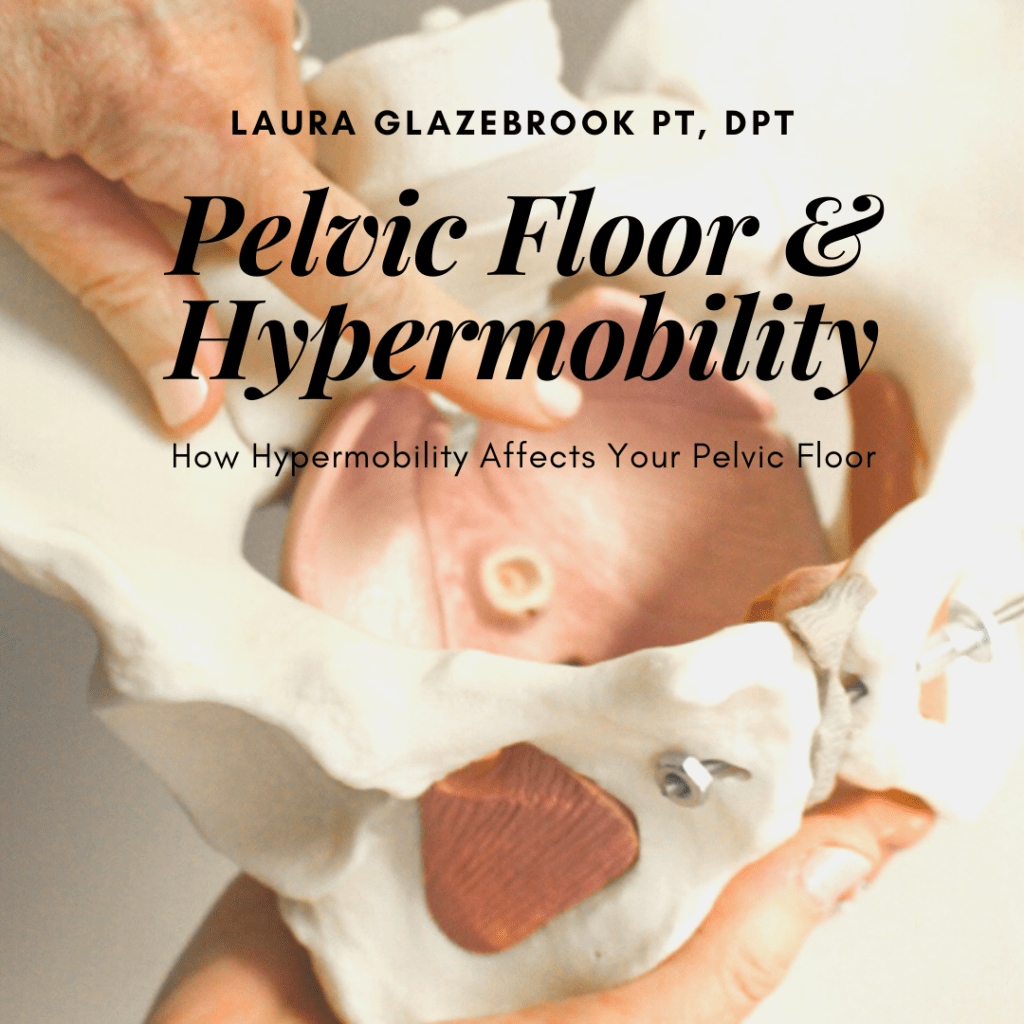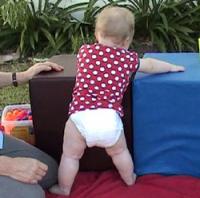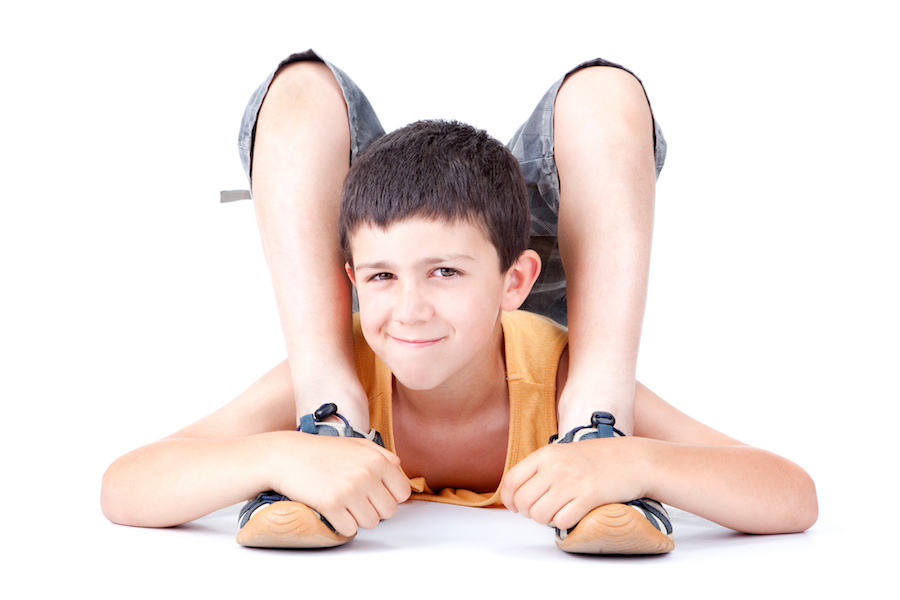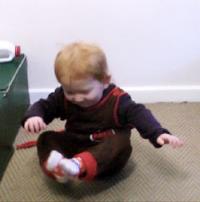hypermobility in babies arms
When you have joint hypermobility it means your joints are more flexible than in other people. Throbbing pain or soreness in muscles.

What Is Hypermobility In Babies Children Young Adults Therapy Stars
This happens when the connective tissue which makes up the joint structures capsule and ligaments is more compliant easier to stretch than usual.

. It depends on a number of factors including genetics age and racial background. Hypermobility is defined as an abnormally increased range of joint motion due to excessive laxity of the constraining soft tissues. Joint hypermobility in babies and children is even more common and usually causes no problems.
Joint hypermobility without pain occurs when children have stretchy or flexible joints but without exercise-related pain. Infant hypermobility is a common asymptomatic condition in children under the age of 5 that causes joints to move outside their normal limits. It is sometimes referred to as being double jointed and is quite common about 1 in 10 people are hypermobile.
Might bum shuffle and never crawl. While standing put hands flat on floor while knees stay straight. In addition its association.
Hypermobility in babies and toddlers. Bone shape or the depth of the joint sockets. Changes in the functioning of your arms and legs relieving symptoms of hypermobile joints if you have joint hypermobility syndrome treatment will focus on relieving pain and strengthening the joint.
When this affects many joints and is associated with pain it is called a hypermobility syndrome. This is called benign hypermobility syndrome since the only symptom is hypermobile joints. Many children are hypermobile double jointed in one or more joints.
It affects people assigned female at birth AFAB and people of Asian and Afro-Caribbean descent more often. 651-325-2200 Pediatric Expert Consult More Ways to Contact Us. 4 points hypermobility likely.
A baby with colic may flail. Joint hypermobility syndrome is most common in children and young people. It affects 7 10 of school age children in the UK.
This can cause severe on-going pain. Hypermobility is very common in babies and children and is often referred to as being double-jointed but that does not mean that this disorder is to. We are at our most flexible as babies and become less flexible with age.
Decreased range of motion. Difficulty moving arms legs or neck. Children who have hypermobility disorder might experience it in one or more joints and might say they have loose joints or describe.
It can be caused by. Colic is a condition where a young baby cries for at least 3 hours per day for 3 or more days per week for 3 weeks or longer. Placing flat hands on the floor with straight legs.
It occurs when collagen levels in tendons and ligaments are altered making the fibers thinner and less stiff. Why is this and what can be done to. Limited joint movement and very little flexibility.
Never been a problem before. Left knee bending backward. Hi I was diagnosed as hypermobile during my pregnancy.
Although it usually is a benign clinical finding that has few serious implications it should raise the clinicians level of concern for the presence of an underlying disorder particularly one involving the connective tissue. The term generalised joint hypermobility GJH is used when a child has several joints that are more flexible than usual. Bend a thumb backwards to touch your forearm.
Hypermobility can be a common source of joint or muscle complaints causing fatigue pain and. Many children with hypermobile joints have movement difficulties. It occurs on average in 30 of the child population being more common in girls than in boys in a ratio of 3 to 1.
HSDs are the diagnosis where the main or only symptoms are exercise-related pain together with joint hypermobility. The slight tightness stiffness in the muscles of the hips and knees helps the newborn infant to lift the arms and legs up when kicking and reaching. This is an advantage to some children and tends to be associated with being good at sport.
The term generalized joint hypermobility GJH is used when a person has several joints that are more flexible than usual. This can be as late as 18 to 20 months. Benign hypermobility describes a child that has several joints that are more flexible than usual.
Left elbow bending backward. Hypermobility in babies or children is a condition whereby a child has more than normal range of movement in some or all of the joints in their body. Children inherently have a greater range of joint motion than adults the prevalence of hypermobility as defined by several criteria varying in different populations from 5 to 30 1 5This variation probably represents ethnic differences but also the different ages at which joint examinations were undertaken and the different populations chosen for study.
Might hate tummy time. The severity of symptoms depends on the location of the injury to the brain and spinal cord. Hypermobility refers to an increased range of.
The Beighton score is measured by adding 1 point for each of the following. Joint hypermobility in babies and children is even more common and usually causes no problems. The older you are the less likely it is you will be hypermobile.
Right knee bending backward. Hypermobile infants often start walking a few months later than usual. 4 points hypermobility likely.
Bend a little finger back more than 90 degrees. Sometimes appear floppy or weak. Hypermobility syndrome HMS is diagnosed using the Beighton score and Brighton criteria.
Might be late learning how to sit sit with a very rounded back or W sit. It is extremely common in children having being reported in 25 to 50 of those younger than 10 years of age. My 9 month old son has rolled over both ways could roll for England sit up unaided for many hours if he had to and can stand and bear weight for some time if I gentlyvery lightly hold him with one finger.
Hi I was diagnosed as hypermobile during my pregnancy. Hypermobility In Babies Arms. It is now slightly.
Hypermobility means a persons joints move beyond a normal range of motion. But when hypermobility causes pain it. Hypermobility refers to an increased range of movement in multiple joints for their age.
This is an advantage to some children and. Some estimates suggest that. Muscle tone or strength.
This happens when the connective tissue which makes up the joint structures capsule and ligaments is more compliant more easily stretched than usual. Loss of balance and frequent falls. You are about to report this post for review by an inspire staff member.
Colic is a condition where a young baby cries for at least 3 hours per day for 3 or more days per week for 3 weeks or longer. Right elbow bending backward. A poor sense.
However for some people hypermobility causes joint pain joint and ligament injuries tiredness fatigue bowel issues and other symptoms. Symptoms of hypertonia include. 651-290-8707 Refer a Patient.
4 points and pain in 4 or more joints for at least 3 months joint hypermobility syndrome likely.

How Hypermobility And Low Muscle Tone Affect Your Infant S Development Low Muscle Tone Pediatric Physical Therapy Muscle Tone

The Pelvic Floor Hypermobility One On One Physical Therapy

How Hypermobility And Low Muscle Tone Affect Your Baby S Development Skills For Action

Double Jointed Baby Arms Hypermobility Youtube

Is My Child Double Jointed Understanding Joint Hypermobility Or Pain

Hypermobility Syndrome Explaining The Invisible Illness

How Hypermobility And Low Muscle Tone Affect Your Baby S Development Skills For Action

How To Recognise Joint Hypermobility In Your Child My Strong Little Body

Hypermobility Syndrome Therapies For Kids

Double Jointed Little Boy Hypermobility Elbow Stock Photo 1172066680 Shutterstock

What You Should Know If Your Child Is Double Jointed Orlando Health Arnold Palmer Hospital For Children

How Hypermobility And Low Muscle Tone Affect Your Baby S Development Skills For Action

Down Syndrome Or Trisomy 21 Therapies For Kids

How Hypermobility And Low Muscle Tone Affect Your Baby S Development Skills For Action

What Is Hypermobility In Babies Children Young Adults Therapy Stars

How Hypermobility And Low Muscle Tone Affect Your Infant S Development Low Muscle Tone Muscle Tone Pediatric Physical Therapy Activities

How Hypermobility And Low Muscle Tone Affect Your Baby S Development Skills For Action

How Hypermobility And Low Muscle Tone Affect Your Baby S Development Skills For Action
